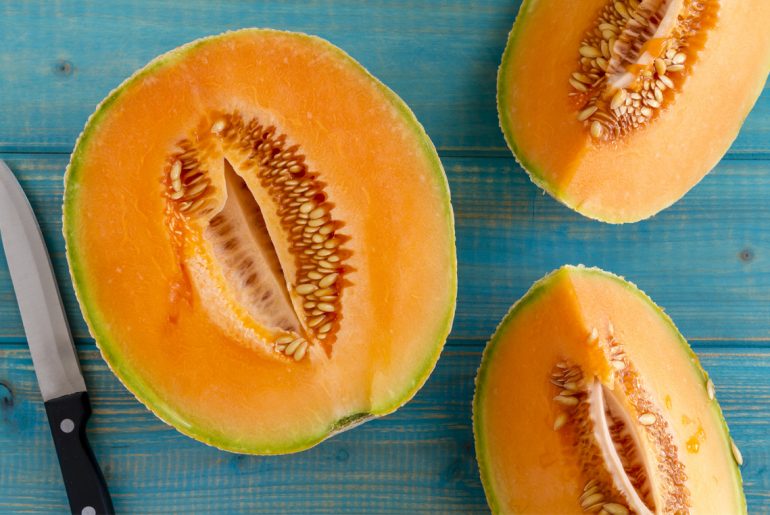Is there anything more disappointing in the world of food than getting home from the supermarket with a bunch of fresh produce only slice it open and find you’ve literally picked a bad apple… or pineapple.. or cantaloupe. Cantaloupe can be particularly tricky because they pretty much all look the same from the outside. So how do you tell what’s happening underneath that rough, tannish-grey skin? With a few tips you can actually get a pretty good idea. Here’s what you need to know:
Buy only in season
You just aren’t going to get the juicy, sweet cantaloupe you crave if you’re shopping in January. In the off season, cantaloupe are shipped from South America, meaning that by the time they make it to your mouth, they’ve been off the vine for quite some time. In the U.S., cantaloupe are at their peak from June until August. So if you’re looking during this time frame, you’re off to a good start.
It should feel firm
Gently squeeze and examine the cantaloupe to make sure there are no squishy areas. This means it’s overripe or heavily bruised. A good cantaloupe will feel firm but not rock hard.
it should be a Heavy weight
A good cantaloupe will feel heavy for its size. You may have to pick up a few to get a sense of which are heavy and which are light. Go with heavy. This means it’s full of juice.
it should have A Sweet Smell
A sweet cantaloupe will smell sweet when you put your nose to the exterior. But pros know to sniff the small, round, circular spot on the bottom of the melon where the stem was once attached. If this spot doesn’t smell super sweet — just like a cantaloupe you’d want to eat — then don’t buy it.
it shouldn’t have a stem
No stem should be visible. A naturally ripe melon detaches from its stem, so if a stem is present, that means the farmer cut the melon too soon, and it’s probably not ripe. Once a melon has been picked from the vine, it will not ripen any further.
it should have a yellow spot
Similar to watermelons, a ripe cantaloupe will have a smooth yellowish patch on the side where the melon was resting in the field. If it doesn’t have this spot, it probably didn’t have enough time to ripen.
ALSO TRY: Cool and refreshing cantaloupe salsa.




